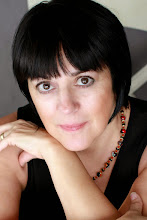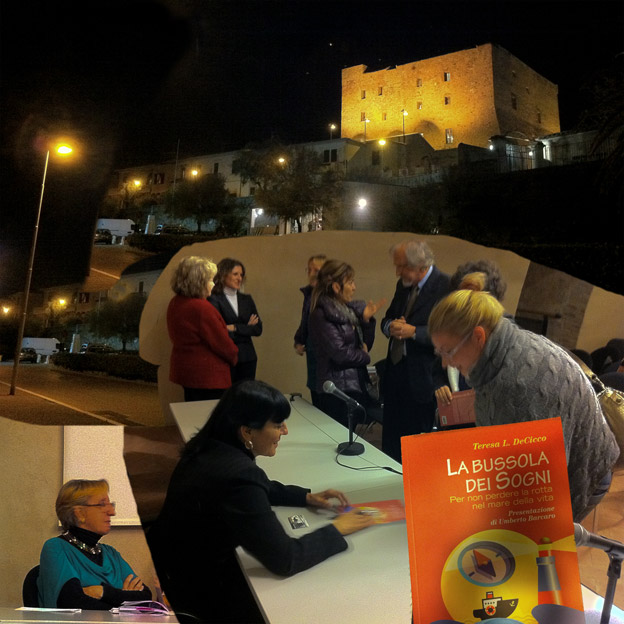Dream writings from the beginning of time have suggested that dreams can be used for creative pursuits. Many authors, artists and scientists have documented that dreams have helped with inventions, works of art, and writings, in many ways. I myself have experienced writing in my own dreams, which has helped me to find new ways of expressing material in scientific articles and, in the writing of my recent book.
In conversations with a professor of psychology and music in Italy, Massimo Schinco experienced writing a piece of music in a dream. He plays the piece and explains the process on youtube at:
http://www.youtube.com/watch?v=cI1kz2_8Z1c
This work nicely explains the creative process of music and the contribution that the dreaming mind can make. Interestingly, in my own teachings and workshops, I find people who are not familiar with the dreaming mind believe that sleep and dreams is akin to falling off the face of the earth. It`s as if sleep is a totally disconnected experience for the individual. In reality, the opposite is true. Sleep and dreaming is a continuous process of consciousness from waking mind to sleeping mind, back to waking mind again, etc. Once we realize this, then we can become aware of our own consciousness while awake and, while asleep in dreaming. What would be the benefit of this?
By paying attention to dreams and then consciously working with them, we can tap into the creative process that occurs while sleeping. The dreaming mind assimilates and consolidates information and then creates new information-as is illustrated by Massimo Schinco on youtube.
We now have a self-generating information system that we can tap into for our own creativity. We can literally write, paint, sculpt and even play the violin in new and creative ways, while sleeping.
Subscribe to:
Post Comments (Atom)


After having seen the clip I put on youtube a colleague of mine (who is also a good friend) wrote me that about 30 years ago, when he was still a teenager, one night he went to bed and in the dim state between wake and sleep he dreamed a piece of dixieland music, played by clarinet, trumpet and trombone. He heard the 3 lines of the instruments interweaving in a very clear and sharp cut way. He wouldn’t awake because he desired to sleep and he was conscious that he would never be able neither to reproduce it some way on a recorder, nor to write it, because he didn’t have the necessary musical skills. But he was amazed because of the clearness of the experience and the absolute verisimilitude with “real” dixie pieces, although he was certain of never having heard it before. For him was astounding the way the music was flowing as a whole, without obstacles in his head.
ReplyDeleteAt those time he was used to watch on TV a program based on the story of an italian dixie band. The program was a success, so that dixie music was more frequent than usual on radio, tv etc. That was, most likely, the diurnal trace.
This friend of mine is passionate of music. He is also a good guitar player, although in these last years, because of the engagement in family and work, he practically gave up playing.
In his style of teaching he is also fond of ideas and practices of networking, sharing, dialoguing. And I know that as psychotherapist he has a not common ability to get close to the heart of suffering people, with a singular skill in taking the heath out of a situation without minimizing or losing respect.
To my ears it all sounds very close to dixie music.
I see his dream as a good metaphor of his soul based on his musical intelligence, and perhaps a sign from his unconscious in sight of his future career’s choices.
Non mi è mai capitato , purtroppo , di avere un sogno creativo o di seguire una persona con un sogno di questo tipo .
ReplyDeleteMa mi chiedo se le immagini legate al processo creativo possono essere simili a quelle create sulla sabbiera ( “terapia con la sabbia “ della Dora Kalf ) o a certi disegni fatti in terapia : per es. spirali o cose con disegnate spirali ( tipo conchiglie ….torri…..) o cerchi concentrici ecc.
Perché se si possono rintracciare delle immagini ricorrenti , queste sono probabilmente dovute alla funzionalità cerebrale nel momento creativo….
Donatella asks: may the images relative to a creative process be considered similar to those created in a sand pit (like Dora Kalf's sand therapy)or, else, to some drawings made during a therapy, like spiral, spiral shaped towers and shell, concentric circles etc.? If reoccuring images could be found, these could as well depend from cerebral functiong during a creative moment.
ReplyDeleteI find a provoking aspect in this Donatella's hypothesis. There is a always a "bodily side" of creativity, which is strongly related to movement and motion. This is evident in little babies when they start drawing. These very simple patterns of "movement" appear again and again in a recursive way at different levels of representation and complexity. When this recursivity is maximized, you have a fractal structure in your product (drawing, music etc.), but usually the process is not brought to this extreme in waking life. In dream it happens more easily, sometimes. usually in waking life the creative person works a lot on his germinal ideas. In Beethoven music this is particularly evident. Take the beginning of the VIII Symphony. A very very simple musical pattern (do la sib do la fa) is represented many times in the entire first movement, with modifications, reframing etc.. A sort of "leitmotif" which contributes to give to that page of music a precise emotional identity.
Quindi Massimo dice ( ed è molto interessante ciò ) che l’atto creativo è fatto di ripetizione e variazione.: il piacere è nell’aspettarsi una cosa conosciuta che per certi aspetti varia.
ReplyDeleteEcco la spirale. Il motivo si ripete sempre uguale a se stesso ( self-similarity ) ma cambia il livello , la dimensione , ecc…
Tutto ciò può essere molto favorito dal sogno .
In a recent study (Nesbitt, Smith, Peters & DeCicco, 2008) participants practiced a task and then went to sleep. They were then tested on the task to see if they improved their ability simply by sleeping on it. Another group "imagined" performing the task but did not physically do it. They too were tested after sleep. Both groups did better on the task-for having actually done it or for having thought about it. It would be interesting to see how the dreams of such participants played out. How do dreams of creating new information appear? Perhaps Massimo could imagine playing the violin before sleep and this would impact on his actual ability to play it??
ReplyDelete"To play better" a piece of music, even a simple one, can be featured as a complex process of learning in which many variables are involved on different levels. On a molecular level we must take into account the attention to "single" elements "like they were" separated one from each other: correct reading, rhythm, being in tune, position and combinations of fingers, of hands, body's parts etc. Then the attention must go up to a higher wholeness level, in which one tries to be "musical" and generate emotions into him/herself and into listeners. So, on this level, the connection between the "playing body + instrument" and one’s ears comes in foreground, and the more molecular elements go in background, with a large percent of automatism.
ReplyDeleteOther different activities must be taken into account, which not necessarily take place always, although they are usually considered very useful to attain a good performance: the “first sight” reading which can precede the two above; singing the piece without instrument; playing it or parts of it by memory and out of the blue etc.
I use to tell my students that, in all these phases, learning (and improvement) takes place in the lapses (even shorts) between a session and another. During a learning session, or a rehearsal, you try and understand what to do and what you want. You realize it for the first time. In the lapses the piece takes its shape.
So it seems that the alternation of focused, voluntary attention and of its suspension play a central role in learning of such a complex activities like a musical performance can be.
Could we consider sleep and dreaming as a very particular form of that alternation, in its turn embedded in the alternation between wake and sleep?
And this , in a recursive way, could be also true for the different phases of dreaming. The real “creative” phase of a creative dream could reside in other phases of dreaming rather than in REM phase. My hypothesis is that in REM phase there is an active elaboration, which could be assimilated to preconscious processes, of already existing stuff (coming from wake experience or from deep sleep dreaming). This way the creative dreamer experiences his/her creation as a whole, as something complete. And this can be puzzling sometimes.
When Paul McCartney dreamed the melody of “Yesterday”, the music was complete in such a way that for a long time he was persuaded it wasn’t his own, that he already heard it somewhere.
The colleague of mine of the post above dreamed a complete and well definite dixie music. My brother, who has a good musical intelligence, told me that years ago he had reoccurring dreams of symphonic music, which sounded like Brahms, although he wasn’t able to reproduce it (he never studied music composition).
I’ll try myself to put in practice the before sleeping rehearsal and even check the experience of others. Is the study of Nesbitt, Smith, Peters & DeCicco readable somewhere?
Thank you for attention and for the opportunity of this conversation!
This paper I mentioned is a graduate student's Masters thesis and will be completed by April. I would be happy to send you a copy when it is completed. This notion that we can practice a tast before sleep and then continue to work on it while sleeping is an important one. No doubt, the new information will be processed in the dream images as well.
ReplyDelete